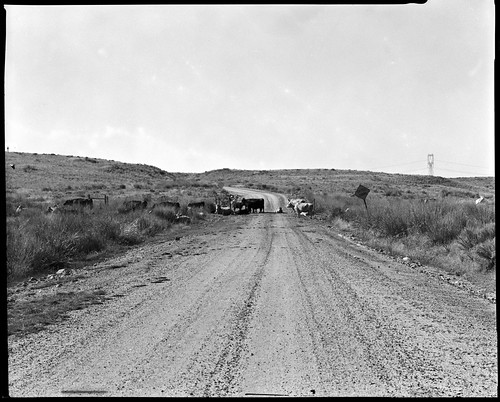How to Chip In Golf – How to Get Started and Make a Difference Ammo!
Are you looking for a hobby that both relaxes and challenges you? Golf is the perfect sport for those who want to be competitive and have fun at the same time. Chipping in golf can be a great way to practice your skills and get better at the game. In this blog post, we’ll explore how to chip in golf, from getting started to making a difference with your shots. We’ll also provide tips on improving your accuracy and technique so you can become a more successful golfer. Read on to discover how chipping in golf can help you improve your game and have more fun.
Understanding the Basics of Chipping In Golf
Chipping in golf is a great way to get started and make a difference on the golf course. It can be a bit daunting at first, but with some practice and understanding of the basics, you’ll be able to chip in successfully. In this section, we’ll cover the basics of chipping in golf, including how to practice with proper form and technique, identify which club to use for different situations, and strategize accordingly. We’ll also discuss how bunker shots can make a big difference on the green, as well as taking on risky approach shots. By understanding these basics and practicing regularly, you’ll be well on your way to becoming a chipper in golf!

Practicing with Proper Form and Technique
Most golfers are familiar with pitching and putting, but many may not know how to chip in. Chipping in is a great way to add extra distance to your game by hitting balls off the ground into the green. There are a few important things you need to understand before you can start chipping In:
-
Chipping In Golf is Not About Accuracy – Just as with any other aspect of your golf swing, accuracy isn’t everything when it comes to chipping in. You want to hit the ball straight and hard into the green, without worrying too much about where it ends up.
-
Chipping In Golf Requires Practice – If you want to become a good chipper, you’ll need to practice regularly. Find spots on the course that allow you to hit shots from varying distances and work on perfecting your technique until it becomes second nature.
-
You Can Use Any Club for Chipping In Golf – While some courses require specific clubs for chipping in (like an iron or wood club), most courses are forgiving enough that any club will do just fine. Experiment with different clubs and find what works best for you – there’s no “one size fits all” approach when it comes to chipping in golf!
- Following Guidelines & Avoiding Unnecessary Risk – When playing out of sand traps or small hazards close to the hole, be sure notTo go for high-risk shots that could easily result in a loss of ball or GREEN IN A BAD POSITION.. Instead, opt for safer shots like bunkers or flop shots – both of which have a greater chance of resulting in a point saved rather than one lost!
Identifying Which Club to Use for Different Situations
There are a few different clubs that can be used for chipping in golf. A lob wedge is great for hitting smooth, low shots down the fairway, while a wedge can be more versatile and effective when hitting uphill or longer shots. It’s important to use the right club for the situation, as different distances require different club strokes.
When chipping in golf, it’s important to keep an eye on your approach shot. Often times greenside bunkers present opportunities to get close to the hole without putting too much pressure on yourself. If you’re able to chip into the bunker and avoid making contact with the sand, you’ll have a better chance of making a putt from there!
Additionally, remember that flop shots play an important role in many golfing scenarios. When pitching out on short holes or trying to save par from tight angles, mastering the flop shot can make all the difference! By correctly striking your ball so it lands softly but evenly near or behind the green, you give yourself a good chance at saving par or even taking home a birdie once again!
Strategically Reading Greens & Adjusting Your Plan Accordingly
When you’re chipping in golf, it’s important to have a plan and stick to it. You need to know when to lay up and when to go for it, and you need to be confident with your short game. Here are some tips for chipping in golf:
-
Practice with proper form and technique. If you’re not practicing properly, you’ll never be able to chip in golf effectively. Make sure you’re hitting the ball squarely and putting it in the right spot on the green.
-
Know which club to use for different situations. For example, if you’re playing a short par-3 hole, you might want to use a shorter club, like a wedge, because the green is small and there’s not much room for error.
-
Strategically read the greens and adjust your plan accordingly. Sometimes the green will look difficult, but if you chip in correctly, you can still make a hole-in-one. Other times, the green might be easy but there may be obstacles on it, like bunkers or trees. Make sure you know what’s going on before you hit your shot.
-
Develop your short game confidence and control. If you’re not confident with your short game, you’ll never be able to chip in golf effectively. Practice making consistent shots from different distances, and work on mastering the flop shot – which is especially important on tight greens.
-
Implement smart pre-shot routines and strategies. Sometimes it’s best to wait until after you hit your shot before deciding whether or not to go for it – this way, you can account for any potential obstacles on the green. Other times, you might want to take advantage of an opportunity that arises during your swing. Be prepared for anything!
-
Master the bunker shot! A good chip in golf can easily turn into a bad shot if you miss the green behind the bunker. Practice hitting shots from different distances and angles so that you know how to handle this situation properly.
-
Take on those risky approach shots! Sometimes it’s worth taking a chance on a chip in golf instead of playing safe with a putt or birdie attempt. If done correctly, a chip in golf can easily result in an eagle or even a hole-in-one!

Learning When to Lay Up or Go For It!
Estimating Distances for Seasoned Players
Knowing when to lay up or go for it on the golf course is a strategic decision that can make or break your round. For seasoned players, estimating distances can be a breeze. However, for newbies, it can be difficult to know when and where to pull the trigger.
There are a few pieces of advice that will help you decide when to chip in and take your chances on the green. First of all, always read the greens closely and adjust your plan accordingly based on what you see. Second, remember that even if you miss putt from short range, there’s usually still some chance of saving par by chipping in from further out. Lastly, use common sense – if there’s nobody around you and the green looks like it’s in easy reach, go for it!
Understanding Risk vs Reward When Choosing a Shot
Learning when to lay up or go for it can be a difficult decision for seasoned golfers. Understanding risk vs reward when choosing a shot can help make the decision easier.
When deciding whether to lay up or go for it, golfers need to consider the following factors:
- The distance to the green.
- The angle of the green.
- The position of the ball on the green.
- The wind direction and speed.
- The lie of the green.
- The pin position.
- The type of shot being played (e.g., long, short, chip, putt).
- The player’s current score and hole position in the tournament.
When deciding whether to lay up or go for it, golfers should also consider the following:
- The risk of making a mistake.
- The risk of not making the shot.
- The potential reward (e.g., more points, a birdie or better).
- The likelihood of achieving the desired outcome (e.g., putting in close to the green, hitting the green and sinking the putt).
Practicing Restraint and Selective Aggression
When you’re on the green, there are a few things to keep in mind. The first is to understand the risk vs. reward equation. The second is to practice restraint and selective aggression.
The risk vs. reward equation is a simple way of thinking about how to make the most out of your opportunities. It’s all about balancing out the potential rewards (ie. putting yourself in a position to make a putt) against the potential risks (ie. missing your putt and ending up with a bogey).
It’s important to understand that risk is relative. What might be a low risk for one player might be a high risk for another player. The key is to weigh the risks and rewards of each option and make a decision based on that.
One of the best ways to practice risk vs. reward is to play golf with someone else. This will help you get used to making decisions in an instant and understand how other people might react under similar circumstances.
Another way to practice restraint and selective aggression is by practicing “shot-making errors”. When you make a mistake, instead of trying to fix it right away, try taking a few more minutes to analyze what went wrong and figure out how you can improve for next time. This will help you learn from your mistakes and build better habits for future shots.
Analyzing Course Features to Make an Informed Decision
There is no one definitive answer to when to chip in on a golf course. However, by analyzing the features of the course and taking into account your own playing strengths and weaknesses, you can make an informed decision about when to chip in.
First and foremost, always remember that it is important to maintain a sense of restraint on the golf course. Chipping in too often can lead to a lack of focus and can easily result in making poor decisions. If you are able to chip in selectively and only when it is advantageous for you, you will be able to play more efficiently and score more points.
Secondly, take into account the course conditions. A wet or windy course will typically require more aggressive play from the player, as they will be more difficult to control. Conversely, a dry course will typically allow for more chipping in. Again, taking into account your own playing strengths and weaknesses is key in making the best decision for the course.
Finally, pay attention to the features of the course. A long par-4 may be a good opportunity to chip in on a short par-3, as the green will be more manageable. Conversely, a short par-4 may be better played as a drive off the tee, as there is less risk of making a mistake. By understanding the features of the course and making an informed decision about when to chip in, you will be able to play more efficiently and score more points on your golf course.
Developing Your Short Game Confidence & Control
There are a few things you can do to improve your short game confidence and control. One of the most important things you can do is practice chipping in golf. This will help you develop a good rhythm and improve your accuracy. You can also practice different shots, such as bunker shots, from different distances. By doing this, you will increase your chances of making a putt from close range.
Implementing Smart Pre-Shot Routines and Strategies
Smart Pre-Shot Routines and Strategies
One of the most important aspects of chipping in golf is having pre-shot routines and strategies that you stick to. This will help you make accurate decisions on when to hit your shots, while also minimizing risk. Here are some tips for creating effective pre-shot routines:
-
Make a plan – Before you tee off, figure out what type of shot you want to hit next. This will help limit the amount of thinking you have to do during your swing. Save risky shots for later in the round if possible.
-
Stay calm – Don’t get wound up before your shot even begins! Practice staying composed under pressure, and don’t let nerves get the best of you – you won’t perform as well as you could if this is an issue for you.
-
Visualize your ideal outcome – Once you have a plan set, picture yourself hitting the ball exactly how you want it to go downrange (or through the green). Doing this will help keep your focus on the task at hand and allow for more consistent execution on subsequent shots.

Master the Flop Shot: The Essential Tool in Close Scenarios
Understanding the Flop Shot
The flop shot is an essential tool in close scenarios, as it can help you generate additional strokes on the green even when you’re short of shots. To maximize its potential, here’s what you need to know about this shot:
First and foremost, make sure your clubface is square to the ball at address. This ensures that your ball will roll more consistent off the green. Second, keep your body facing the direction of play throughout the swing; this will create a larger impact area and increase chances of making a hole in one. Finally, aim high and strike the ball squarely on its downward move; this will give it maximum speed and bounce for a successful chip into the hole.
If executed correctly, the flop shot can be a huge advantage in close play. By mastering this shot, you can increase your chances of winning close contests, and take your game to the next level.
Practicing the Flop Shot
Learning how to chip in golf can make a big difference when playing with others. As a matter of fact, it is one of the most important shots in all of golf.
The flop shot is essential for two reasons: first, it can turn a close hole into an easy one; and second, it gives you an opportunity to add some putts into your round if the stick falls your way. Here are four tips on mastering this key shot:
Practice Often
The best way to improve your hand-eye coordination is by practicing often. Take time out during each round to work on your flop shot and see Improvement will come almost immediately! One other benefit of practicing regularly is that you will get comfortable with unusual putting conditions.
Get a Good Grip
One of the most important things you can do to improve your flop shot is to get a good grip. You want to make sure that your hand is positioned as close to the clubface as possible. This will give you more control over the shot.
Use a Short Stroke
When you chip in golf, make sure that you use a short stroke. This will help you keep the ball in front of the green and on the fairway.
Keep Your Eye on the Ball
One of the most important things that you need to do when chipping in golf is to keep your eye on the ball. This will help you make accurate swings and avoid hitting the ball off the green.
Executing the Flop Shot in Close Scenarios
The flop shot is one of the most important shots in golf. It’s a powerful way to get out of difficult situations on the green.
To execute the flop shot, start by setting up your clubface so that it’s square to the ground. Then, take a deep breath and release it slowly while keeping your shoulders down. When you swing, make sure to keep your hands close to your body and keep your wrists straight.
The flop shot is a powerful tool that can help you get out of difficult situations on the green. Practice it so that you can master it in close scenarios.
Improving Your Flop Shot Accuracy
If you’ve ever played in a close scenario, chances are you’ve had to deal with a chipper. Whether they’re on the green or just out of range, chip shots can become crucial in tight matches. Here’s how to improve your accuracy when chipping:
Practice Your Form
The first step is to get comfortable with your form. The way you hold the club and position your body will affect the speed and direction of your ball. Practice setting up for different shot types and find what works best for you.
Control Your Swing Speed
Too much swing speed can lead to inconsistency and poor accuracy when chipping. Try to keep your backswing slow and compact so that the clubface follows through the ball more easily.
Aim For the Green
When you’re aiming for the green, it’s important to know the rough conditions. The lie of the green can affect your chip shot dramatically, so be sure to study the layout before striking the ball.
Remember to keep your eyes on the ball at all times! If you lose focus, your shot may end up far from where you wanted it to go.
How Bunker Shots Can Make A Big Difference on the Green
One of the most important aspects of chipping in golf is learning when to lay up and when to go for it. There are a number of factors to consider when making this decision, such as the green, the wind, and your opponent. By understanding these factors, you can make sound decisions that will help you score points on the golf course.
One of the most important things to remember when chipping in golf is to keep your shots low and tight. This will help you avoid putting yourself in difficult situations on the green. When you are laying up, try to hit your ball close to the ground so that it will roll a long way. If you are going for it, try to hit your ball high into the air so that it will drop close to the hole.
By understanding how to chip in golf, you can improve your game and make a difference on the course.
Taking On Those Risky, Yet Rewarding Approach Shots
There are times when it’s important to take a calculated risk in order to make a significant shot. This can be especially true when you’re up against a tight green or pressured by the competition. No matter how challenging the situation may seem, there are always options available if you adopt a smart approach and use the right club(s). Here are four tips that will help you navigate these tricky waters successfully:
- Stay Calm – The key to good decision-making is maintaining composure under pressure. Don’t let your emotions get in the way of sound judgement, and don’t over-think things. Just stick to your plan, take care of the basics (e.g., target area selection and alignment), and trust that everything else will fall into place.
- Use Your Gut Feeling – Sometimes it’s better not to think about what you’re doing at all (especially when it comes to putting). Instead, just go with your gut instinct and trust your stroke mechanics judgmentally. If something feels off or risky, chances are high that there’s another option that would be more effective in this particular scenario.
- Get Creative – When problems arise on the green, don’t be afraid to try anything! You never know – maybe something unconventional (but effective) like anhyzer flops or bunker shots will solve the problem for you.. Experimenting is always fun – so give it a try!
And lastly…
. Have Fun! Golf isn’t meant to be taken too seriously – relax and have some fun while still playing within your limits.. After all, if at any point during your round things start feeling too stressful or difficult, simply take a break until things lighten up again….
Chipping in golf is an essential skill to master if you’re looking to improve your scores and reach the next level. Learning how to read greens, choose the right club for each scenario, practicing proper technique and developing confidence can help make a big difference on the course. Now that you have a better understanding of what it takes to chip in golf, try putting these strategies into action! If you want more golf knowledge and tips like these, be sure to check out our other content!








